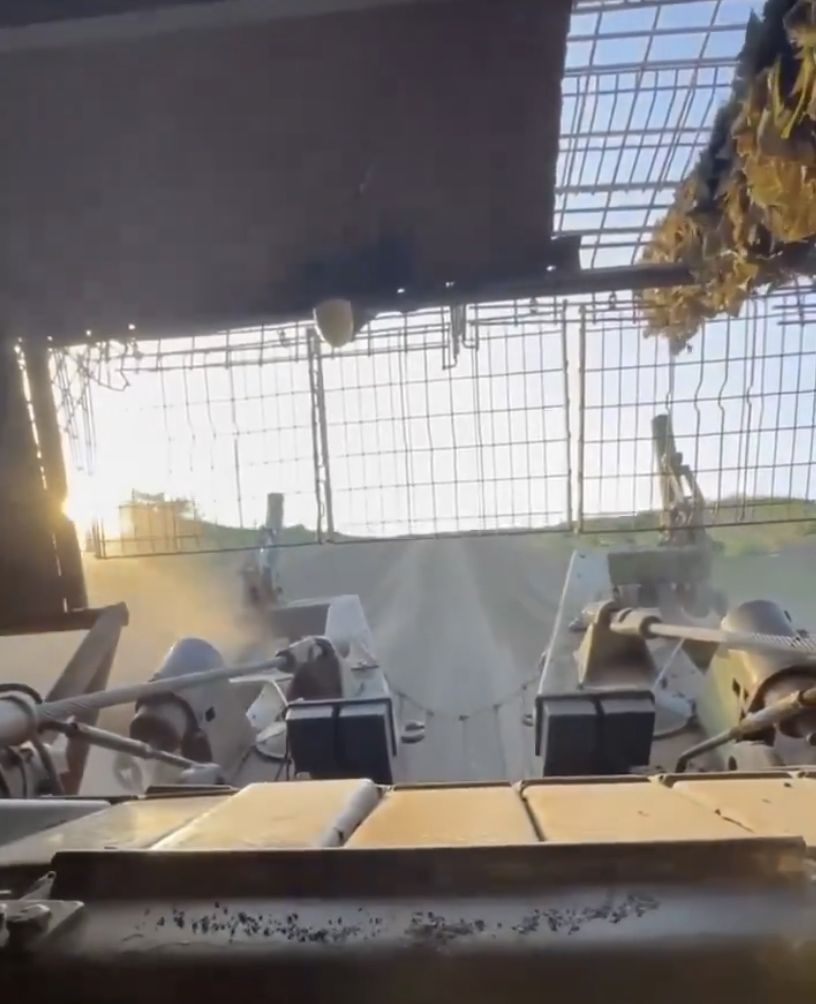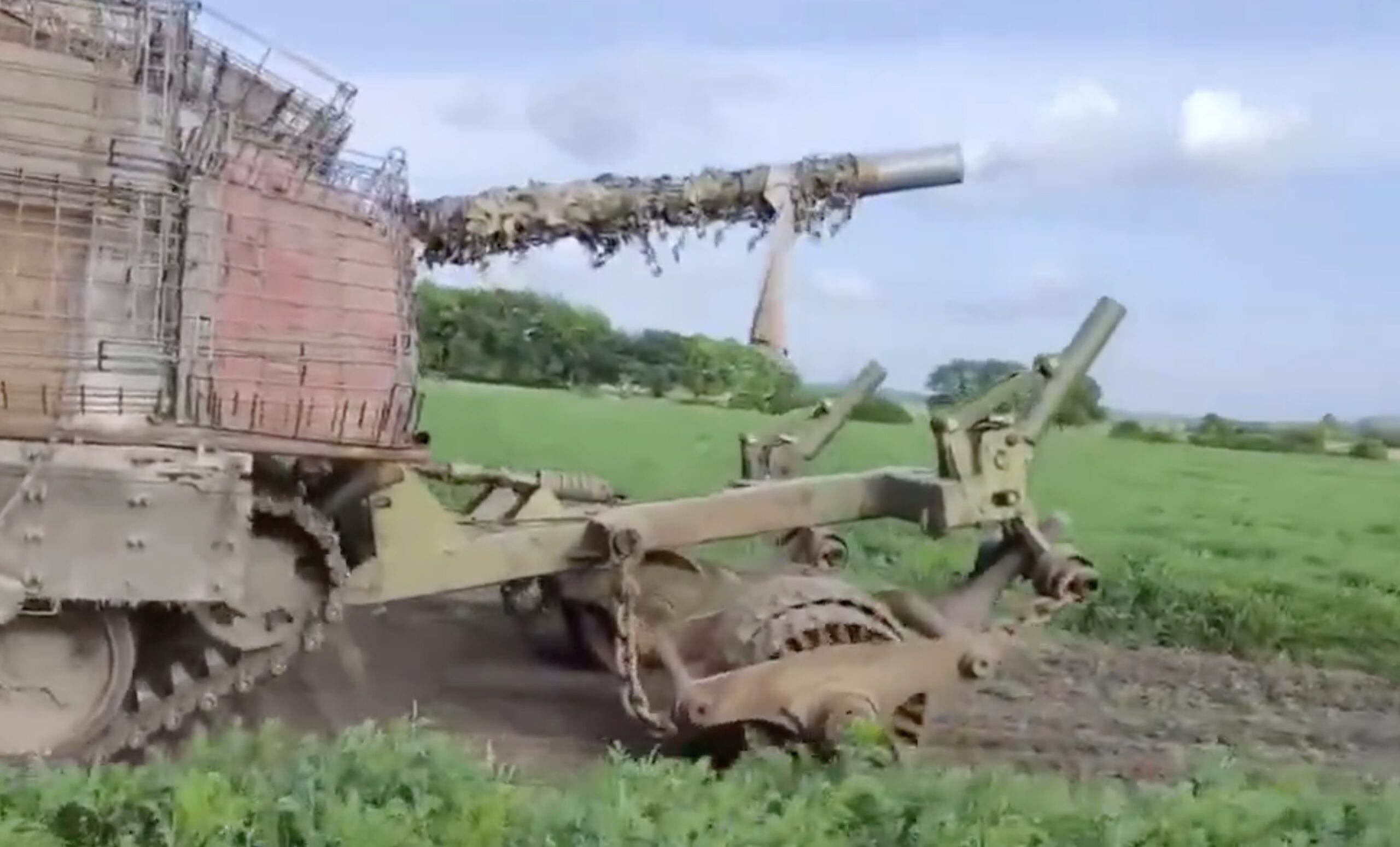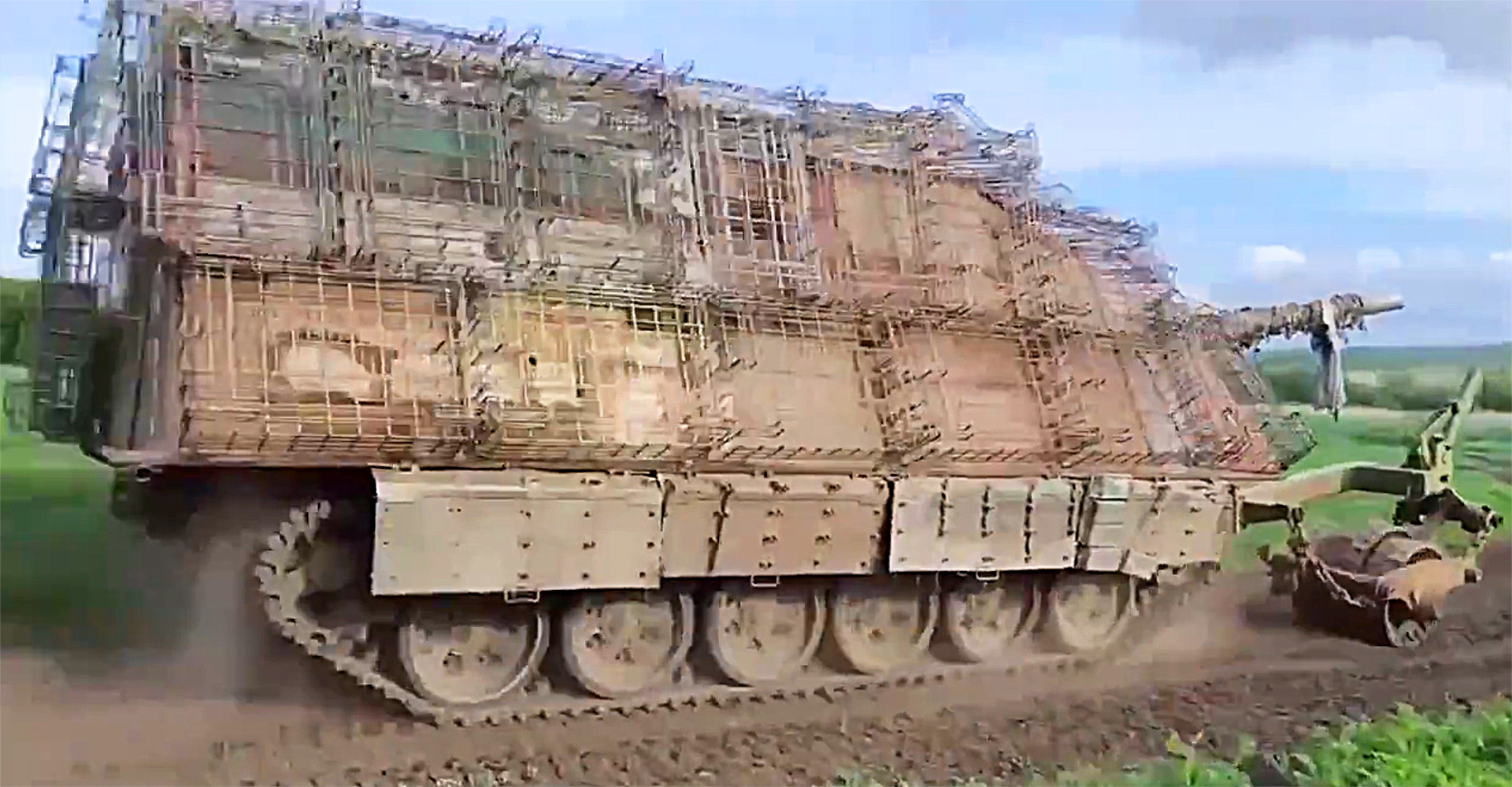We now have our first look at what it’s like to actually operate Russia’s monstrous ‘turtle tanks.’ The type seen in a new video is yet another variant on Russia’s expanding, and rapidly evolving, fleet of turtle tanks — the first of which emerged on the battlefield in early April — which feature distinctive armor modifications for protection against drone attacks, notably first-person view (FPV) kamikaze kinds.
Video footage shot from inside one of the turtle tanks, alongside a clip showing off its exterior, emerged on social media this weekend. When and where the footage was captured precisely cannot be independently verified by The War Zone. So far, T-72 tank variants have been readily identified as the basis for turtle tank conversions, although whether other tanks have as well remains unknown. The particular turtle tank seen in the recent video sports a KMT-series mine roller.
First and foremost, the footage in question gives a clear sense of the obstructed forward-facing view for its operators. This is created largely by the addition of the turtle-shell-like steel apparatus that cocoons the tank beneath, restricting the wider visibility of the crew. Prior to the emergence of Russia’s turtle tanks, its military relied on increasingly elaborate “cope cages” for armored vehicle and tank protection.

However, on top of this, an additional heavy layer of protection has been added in the form of extra cage armor. This looks akin to “net” and “slat” armor, which offers defense against rocket-propelled grenades and other light anti-armor weapons. Net and slat armor is designed to protect against the shaped charges in many anti-tank rounds, which need to detonate at certain distances from the target to be most effective. This new addition changes the smoother outer shell of the turtle tank into something that looks more like a porcupine.
The view from the inside of the tank also shows that its front-end has been largely closed-up by the added armor, affecting the traverse of its main gun. However, this still leaves space for precision-guided munitions, like well-piloted FPV drones, to pass through up front. We have seen chains and wire fencing hung at either end of the turtle tanks in the recent past to give them some defense against FPV drones attacking from those vectors.

The tank’s KMT-7 mine roller is indicative of these crudely adapted tanks’ mission. Mine rollers are designed to detonate various kinds of mines prematurely, protecting the vehicle they are attached to and its occupants, as well as any that may follow behind them. That the latest Russian turtle tank has been fitted with one of these isn’t surprising, given that the first turtle tank we saw on the frontline, as later footage of it close-up showed, was fitted with a mine plow up front. At the time we posited that these tanks were to be used as ‘point men’ in armored assaults, clearing the way for columns and taking a massive beating in the process.
Since then, further videos have shown that these tanks are being used for exactly this purpose — to clear a path from mines and provide smoke screens for other armored equipment advancing behind them. Mine clearing operations tend to be slow-moving, with the vehicles leading the way all the more likely to be targeted by drones.
Russia has, it should be noted, added advanced electronic warfare jammers onto a least some of its turtle tanks in the past in order to disrupt Ukrainian drones. These sorts of jammers — seen on a variety of Russian tanks and armored vehicles — work by severing the LOS datalink between the operator and the drone.
The impact of FPV drones during the war in Ukraine cannot be overstated. They have become a signature weapon of the conflict, having been used to great effect against tanks and soldiers on the battlefield. Both sides are desperately trying to develop various forms of countermeasures against them.
The significance of cheap to make FPV munitions is such that, for Ukrainian forces, they are increasingly seen as being on par with artillery. While Ukraine is looking to up production of them this year to around a million, Russia has also quickly increased its own stockpiles of them, to the point where it is considered to have rivaled the numbers at Kyiv’s disposal.
In light of this, it’s no surprise that Russia has had to look for any ways possible to counter marauding drones during its armored assaults, even if this greatly reduces the visibility, maneuverability, and lethality of some of its vehicles. In the end, the turtle tanks’ job is to survive long enough to get other armor through, becoming a sponge for drone attacks, and other sorts of attacks, in the process.
Considering how rapidly these improvised vehicles are evolving, who knows what features they will sport next.
Contact the author: oliver@thewarzone.com
